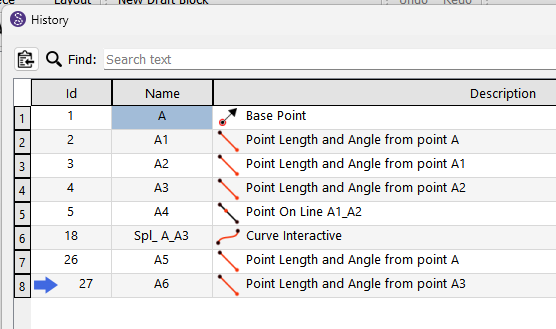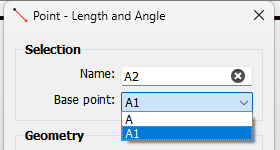Hi all, currently i’m using vector software to manipulate from a block, adding my style lines and turning this into a sewing pattern. Can this software do the same or is it all draft from the beginning? I’ve been thinking about transitioning for so long. I just need to make sure It can do what I need, plus I need to work more accurately and efficiently. I make sewing patterns and grade them for the sewing classes I teach. Any advice really welcomed.
Welcome to the Seamly forum!
If I’m not misreading you, although Seamly doesn’t come with blocks to manipulate, & most of us so far do draft from the beginning, (at least to start,) a set of basic blocks is available from the Seamly shop for a mere $50(us), which are quite able to be custom styled as you wish.
I hope this answers your question!
![]()
Welcome…
You can certainly use Seamly to draft basic blocks, which can be saved as a template to start a new pattern from - so you don’t have to totally start from the beginning everytime.
Seamly though has an advantage over using vector software in drafting patterns… it’s parametric in nature. That is, it’s mainly formula driven, and by using formulas instead of hardcoding parameters, you can apply custom measurment files to automatically adjust a pattern to a custom fit.
Hello and welcome to the Seamly forum, @Patterncuttacornwall
I’m adding my voice to those of @Pneumarian and @Douglas, since “Any advice really welcomed”.
You will find that Seamly is totally amazing and will simplify your drafting hugely, cutting out manually grading your patterns (as you need to do in a vector program) and save you a lot of time.
Currently, and we’re working on this aspect but it will take some time, you will need to export each graded size to SVG and import them into a vector program for nesting, if this is what you do and save or print your nested patterns from the vector program.
If you are printing each size individually, you can do this directly from Seamly.
To draft your pattern, you need to attach a measurement file (either an individuals measurements or a multisize). At any point, you can upload another measurement file into Seamly, which will adjust your pattern to that measurement file - as long as all of the measurement areas used in pattern are in the measurement file, regardless of whether it’s an individual or multisize file.
The best is, to start off with a Master pattern (which is the start of every new design in future), which you may create from scratch or, as @Pneumarian mentioned, there is one on the website.
I work closely with someone who does something very similar, who also transitioned from vector to Seamly and she has never looked back and it has simplified the process for her and given her work a clean & professional touch.
Anything new has a learning curve, but we are all here to help you if you have any questions.
I should note that with my last update in the sample folder there is an “all measurements” template - which includes all the measurement variables. A bit overkill, but it’s there. There’s also a template for Aldridge’s for women.
Hi thanks for the advice. I’ve actually got blocks now so would I be able to use my current blocks. It will save time redrating and grading all my styles. Is there a way to import? please thanks
No. Seamly2D is not a vector based application. It’s driven by parametric formulas that constantly rebuild the pattern whenever changes call for the xml pattern to be (re)parsed - as opposed to points in specific x-y coordinates. Vector formats do not contain any formula data, so they are meaningless to Seamly - with no way to calculate any given point. You use Seamly just like most pattern systems draft… where any given point is dependant on some previous point(s) (and or curve). If you follow the History, you can see how each tool is built in sequential order.

If you look at the XML file, you will see the History mirrors the draftBlock → caculation section of a pattern file:
<draftBlock name="Draft block 1"> <calculation> <point id="1" mx="0.0520833" my="0.104167" name="A" showPointName="true" type="single" x="0.3125" y="0.416667"/> <point angle="90" basePoint="1" id="2" length="4" lineColor="black" lineType="solidLine" lineWeight="1.2" mx="0.0520833" my="0.082782" name="A1" showPointName="true" type="endLine"/> <point angle="0" basePoint="2" id="3" length="8" lineColor="black" lineType="solidLine" lineWeight="1.2" mx="0.0520833" my="0.104167" name="A2" showPointName="true" type="endLine"/> <point angle="270" basePoint="3" id="4" length="4" lineColor="black" lineType="solidLine" lineWeight="1.2" mx="0.0520833" my="0.104167" name="A3" showPointName="true" type="endLine"/> <point firstPoint="2" id="5" length="CurrentLength/2" lineColor="black" lineType="none" lineWeight="0.35" mx="0.0520833" my="0.104167" name="A4" secondPoint="3" showPointName="true" type="alongLine"/> <spline angle1="290.1" angle2="263.5" color="black" id="18" length1="0.467575" length2="3.49977" lineWeight="1.2" penStyle="solidLine" point1="1" point4="4" type="simpleInteractive"/> <point angle="46.3755" basePoint="1" id="26" length="2.56276" lineColor="black" lineType="solidLine" lineWeight="1.2" mx="0.0520833" my="0.104167" name="A5" showPointName="true" type="endLine"/> <point angle="138.28" basePoint="4" id="27" length="2.9806" lineColor="black" lineType="solidLine" lineWeight="1.2" mx="0.0520833" my="0.104167" name="A6" showPointName="true" type="endLine"/> </calculation>
If changes are made to the formula of point A1… the whole pattern has to be reparsed and redrawn - where all the points downline will change. The only points that have fixed coordinates are the basepoints. In this case point A at x=0.3125 y=0.416667.
In a vector application you can draw a line or curve from any point to any point as there are no formulas bounding the points.
Also just to point out a major aspect of Seamly2D… like I said tools can only access other tools that were created before them. Think of it as reading a book, where by Chapter 3 you know all the character introduced in chapts 1&2, but you don’t know yet about the new characters introduced in chapters 8&9. Like wise in my example, point A2 does not have access to points A3, A4, A5 and A6 , as they have not been created yet. You will at some point experience this limitation and wonder why a point is not showing up in a drop down or the Fx editor… this is why.

It helps to think ahead what points / curve you may need later in a draft, so you don’t have to create a redundant copy.
Since you already have these created, I’d start off by first drafting any new designs. Later, when you have time, you can go back and do any of your existing designs as you need them.
Ah thanks, That makes sense. Brilliant thanks so much
This topic was automatically closed 3 days after the last reply. New replies are no longer allowed.